Pain
The roots of pain
Abstract
This is a personal voyage through pain. The author, drawing on the wisdom of the Integral Yoga, attempts to trace the root-causes of pain and relate them to his own experience. Only by understanding its roots, he believes, can a complete solution be found and only by realising its illusion can the Truth behind pain fully emerge. This Truth, which is behind everything, transcends all pain and suffering.
“He stung himself with bliss and called it pain.”*.
Pain has always been an enigma to me. I have read books on the subject but most of the time their explanations get me nowhere. I somehow feel pain’s central knot to be individual and so goes outside their range. However, the writings of Sri Aurobindo and the Mother shed enormous light on this complex subject. But if one wants to truly move forward, their wisdom and help must surely be amalgamated into one’s own experience.
This is the hard part of our education. For something as ‘unpleasant’ as pain, nothing is as frightening as not knowing the true cause. Without this key, there is no prospect of solution. Sometimes I feel as if I am skirting around the borderlines of this affliction, a little fearful of giving it my fullest awareness. When pain comes, it is clearly trying to tell me something. I can almost hear the Mother encouraging me to enquire below its surface. Indeed the Mother took it upon herself to go deep into the world-pain in order to transform it. I do believe that it is possible to transform any pain that visits us. But to do that, knowing the cause is essential.
One thing I now notice in pain is its façade of illusion. It is only a front and apparition but as long as that ‘illusion’ persists pain will always be present. This duality is only a distortion of a sublime Oneness that lies behind everything. But it is so entrenched it has become a fact of life. So wherever pleasure arises, pain is always lurking, waiting to cast its ominous shadow. A quick self-examination verifies this. As soon as one becomes a little more awake, any excess of pleasure tends to produce a bitter aftertaste and when taken to an extreme, it can actually provoke a sense of pain and suffering. The reason behind this is explained by Sri Aurobindo:
“Pleasure can become pain or pain pleasure because in their secret reality they are the same thing differently reproduced in the sensations and emotions” (1).
They are the ‘same thing’ because both are a deformation of an essential backdrop that pervades every strand of existence: they hide and disguise the true state of Ānanda. So perhaps it would be helpful to enquire into how this distortion arises in the first place.
At the root of this affliction, Sri Aurobindo writes, lies a more deep-seated malady, in man’s separation from the soul: ”The malady of the world is that the individual cannot find his real soul, and the root-cause of this malady is again that he cannot meet in his embrace of things outward the real soul of the world in which he lives” (2).
Man seeks oneness but finds himself confronted by an array of opposing shocks and forces; he searches “the essence of being, the essence of power, the essence of conscious-existence, the essence of delight, but receives instead a crowd of contradictory touches and impressions.” (3). He cannot find this essence and so cannot find his soul, “because the true soul is his self’s delegate and his self and the self of the world are one” (4).
One reason why this search can be so difficult, Sri Aurobindo explains, is the influence of the ‘surface’ or ‘desire-soul’. Not surprisingly, he also calls it the ‘superficial soul’. Here, “there is no true soul-life, but a psychic deformation and wrong reception of the touch of things” (5). It is a mask and a vehicle tainted with ego. And so, the rasa** of delight, a delight which lies at the root of all things, becomes misinterpreted and gets rendered unequally into pain, pleasure and indifference (6). It is a ‘triple misinterpretation’ and all three terms are wrongly translated and twisted by this superficial soul from their true state of oneness and bliss.
Cause of pain
So until the ‘subliminal soul’ takes executive control of his being, man will always fall prey to a variety of impacts and forces. The surface circuitry needs to be mastered and harmonised by something much greater. Outside intrusions will always knock on our doors but, as long as the surface nature presides, an improper reception to them will persist and lead to pain:
“It is the incompleteness and weakness of the Consciousness-Force manifested in the mental, vital and physical being, its inability to receive or refuse at will, or, receiving, to assimilate or harmonise the contacts of the universal Energy cast upon it, that is the cause of pain and suffering” (7).
Man’s nature is subjected to a law of division which creates “an egoistic and piecemeal instead of a universal reception of contacts by the individual” (8).
The Mother explains that it is the turning of the consciousness which proves decisive:
“If the consciousness is turned upward, the pain vanishes. If it is turned downward, the pain is felt and even increases. When one experiments with the upward and the downward turnings, one sees that the bodily complaint as such has nothing to do with the pain. The body may suffer very much or not at all, although its condition is exactly the same. It is the turn of the consciousness that makes all the difference” (9).
This observation explains many things. A change of seasons, for instance, often upsets our equilibrium and can have a harmful influence on the body. Pain is never lurking far behind. It is the turn of the consciousness that usually induces this imbalance.
When I am coiled up inside and feeling sorry for myself, pain tends to multiply. However, a simple feeling of joy and aspiration lifts the spectre away like a rejected shroud. Detached from strife and anguish, the body feels serene.
It also explains to me why I am sometimes faced with pain when performing more mundane chores. I simply allow the activity to tug on the consciousness and pull it down. I lose my poise and pain intrudes. Quite often though, when a more challenging ordeal appears, I might realign myself, call the Mother and no unpleasant sensation arises.
Physical suffering
Psychological suffering, the Mother informs us, is specifically due to “a wrong working of the mind” (10). Again, the falsity of our surface nature sits at the root. However, it is the distortions of the mind that precipitate the affliction and that is why, to a large extent, it is largely within the range of man, the mental being.
“But physical suffering gives me the impression of a child being beaten, because here, in Matter, Falsehood has become ignorance; that is to say, there is no bad will — no bad will is there in Matter, all is inertia and ignorance: complete ignorance of the Truth, ignorance of the Origin, ignorance of the Possibility and ignorance even of what is to be done in order not to suffer physically. This ignorance is everywhere in the cells, and it is only the experience, the experience of what is translated in this rudimentary consciousness as suffering, which can awaken, bring forth the need to know and to cure, and the aspiration to transform oneself” (11).
Experience
I find that to lose true contact with the body invariably produces pain. I have no idea how unique this experience is. Maybe the aim for transformation imposes different conditions because I’ve heard a few claim that it is possible to rise above the body and distance oneself from all semblance of pain. Just by being indifferent to the body’s woes, they lose all significance. In this way, one can just leave the body behind and escape. I can’t vouch for this because something in my being has prevented me from performing this task. It is always the body which pulls me down.
Perhaps this is not the most convenient state of affairs. We get a lot of baggage when we are engrossed in the body. At the bottom of this stands a misplaced identification but when disconnected from the physical, life does seem less complicated. Desires dissipate and any greyness and obscurity dissolve in a freer air. Spontaneously, a freshness and goodwill returns; life starts to feel better again.
But somehow a balance of the whole nature is missing. At the root of my experience lies a knot produced by the surface mind. It often starts to identify with physical difficulties, doesn’t like what it sees and so pushes the rest of the system into recoil from the physical. I don’t believe it to be a conscious will; it is almost a reflex action. But it is clearly a recipe for disaster. This reminds me of the Mother’s words:
”If you are identified with the forces from below, you suffer; if you are identified with the forces from above, you are happy” (12).
It is a truer consciousness that the body requires and not this hasty retreat. Sometimes a sharp throb in my right leg reminds me of unfinished business. I even get the impression that this pain is my last link with the manifestation! Very often I have to remind myself of Sri Aurobindo’s tenet of keeping the ‘right station’ and maintain a sense of detachment on the physical frame. One has to lay one’s foundation on a higher determinism and do the work from that point. If the body itself is in a state of disharmony then certainly attention can be drawn from that poise. Frequently though, one might find the body itself is not culpable and the disharmony is caused by a lack of true inner balance. In the Integral Yoga, every aspect of our nature has to be addressed; there are no opt-out clauses.
The lesson of pain
Sri Aurobindo informs us that pain is a schooling:
“Pain is the touch of our Mother teaching us how to bear and grow in rapture. She has three stages of her schooling, endurance first, next equality of soul, last ecstasy” (13).
Without it, man could not be goaded into climbing the peaks of delight. Without it indeed, “one would never stop to look for a way to stop the disorganisation” (14). It is a warning and a reminder of our unfinished work. It is a harsh lesson, one we normally try to avoid but sometimes something twisted in the vital nature even seeks it.
Each one of us has a lesson to learn from pain. The specifics depend on circumstance and most particularly on the leanings of the individual nature. Each person possesses an ‘impossibility’ that stands against change and induces pain.
But there are general patterns too. As soon as a thirst for change awakens in the being, the criteria completely change. The ideal of perfecting the body raises the stakes altogether. It then becomes necessary to infuse consciousness into the body and keep it open to the transforming Force. If there is an inherent flaw in the body, it becomes even more imperative. So when pain comes, it is a reminder that I am somehow faltering in this task. If I want to step completely out of pain, the lesson is to remain always open. I find that I need to remain open when engaged in action as activity has a way of drawing me to the surface. I need to be open when in the company of others. I need to be open at night when I lie in bed. The body is asking more from me and I guess that behind it lie the promptings of the soul. If I forget or slacken, pain steps forward, reminding me that I must go on.
It is not a mental concentration, but more a matter of quietening the mind and trying to open all those ‘hidden doors’. The reality is though, I switch on and off. It is not an ideal state of affairs but I’m sure it’s not unique. If the aspiration subsides, a feeling of lack emerges, not just pain, a feeling that I am letting my wholeness slip away. The joy of progress is somehow missing.
Pain can also become entrenched. If the grooves of our nature become wider, pain can become chronic. It starts to take the form of habit. Those shocks from outside now induce a more repetitive response and pain becomes a regular feature. Illness usually acts as the catalyst in this process and if there has been physical breakdown, the mind might sometimes look for convenient shortcuts which only enlarge the falsity of the body itself. This process can accumulate over many years, stacking more and more onto this heap of pain.
A parting gift
Pain always arrives when we reject something that we’re attached to. That certainly applies to psychological pain, but I find that every psychological affliction has a way of rising onto the surface to express itself in the body.
“There is something in you which you don’t want, something bad — for one reason or another you don’t want it, you want to pull it out — well, if you identify yourself ever so little with that thing, you feel the pain of the extraction”… (15)
I guess that unless rejection obtains the fullest collaboration of the whole being, a sense of attachment will persist. So pain will also be present. Very often rejection comes as a result of a mental will and tremendous tussles can sometimes ensue, particularly if the vital is adamant that the flaw should remain. Unless the will is unified behind the rejection, tremendous pain can result, leaving “a nice little knock as a parting gift” (16).
Simply enquiring inside, for me, offers a better solution. I find it a wonderful way of educating and illuminating the nature. Here, we can invite the scrutiny of the soul. The soul harmonises and doesn’t need to coerce. With a quiet patience, its searchlight can find all those hidden flaws. Pain is a sure indicator of disharmony and this light has the capacity to identify those subtle sources of pain which have yet to fully proliferate in the body. Once found, these bad things disappear because knowledge seems to simultaneously appear with this light. Finding the truth behind something dissolves the anomaly. Sometimes by stating this truth, its very roots disappear. But the process must be brought to a complete conclusion with no dark corners left. If anything lingering remains, attachment can persist and leads to pain.
Mind and pain
Getting rid of the mental factor, the Mother says, is the first stage in pain’s schooling. It is the surface mind which gives pain its broader turn. It is also what gives man’s suffering a unique twist. Like a magnet, the attention of the mind is drawn to pain. Although it is horrified and wants to be rid of the affliction, it fixes on pain and its way of analysing only intensifies the suffering even more. It’s just that it cannot understand; it identifies with the drama and the agony. Therefore a higher ground must be sought:
“… the body can bear far more than people think, provided they don’t add fear and anxiety to the pain; if you can get rid of that mental factor, the body, left to itself, without either fear or fright or anxiety for what will happen — without anguish — can bear a great deal” (17).
And behind the mind, resides the whole range of our warped psychology, not least the vital, which can give pain a greater intensity:
“Unfortunately, there is the vital which pokes its nose into the affair and takes a very perverse pleasure in increasing, twisting, sharpening the suffering. Now this deforms the whole system because instead of being an indicator, sometimes it becomes an occasion for enjoying the illness, for making oneself interesting, and also having the opportunity to pity oneself — all kinds of things which all come from the vital and are all detestable, one more than another”(18).
The roots
If a weed has to be destroyed, it is removed by the roots. The same can apply with pain. But first, I believe that one has to acknowledge its existence and try to understand what gives it nourishment. Individual conditions will always prevail and understanding these factors takes a degree of self-knowledge. Observation is a very necessary poise: one has to learn to understand one’s nature and have the courage to stand up to anything that needs to be put right. So knowing the cause is the first step in eradicating pain. In my next article, I shall examine some ways of going further and facing it.
References
1. Sri Aurobindo. SABCL, Volume 18. Pondicherry; Sri Aurobindo Ashram Trust, 1970, p. 222.
2. Ibid., p. 221.
3. Ibid.
4. Ibid., p. 222.
5. Ibid., p. 221.
6. Ibid., p. 222.
7. Op. cit. SABCL, Volume 19. Pondicherry: Sri Aurobindo Ashram Trust; 1970, p. 988.
8. Op. cit. SABCL, Volume 18. Pondicherry; Sri Aurobindo Ashram Trust, 1970, p. 108.
9. The Mother. Collected Works of the Mother, Volume 15. Pondicherry: Sri Aurobindo Ashram Trust; 2004, p. 145.
10. Op. cit. Collected Works of the Mother, Volume 11. Pondicherry: Sri Aurobindo Ashram Trust; 2002, p. 41.
11. Ibid.
12. Op. cit. Collected Works of the Mother, Volume 8. Pondicherry: Sri Aurobindo Ashram Trust; 2003, pp. 84-5.
13. Op. cit. SABCL, Volume 17. Pondicherry: Sri Aurobindo Ashram Trust; 1972, p. 89.
14. Op. cit. Collected Works of the Mother, Volume 6. Pondicherry: Sri Aurobindo Ashram Trust; 2003, p. 406.
15. Op. cit. Collected Works of the Mother, Volume 8. Pondicherry: Sri Aurobindo Ashram Trust; 2003, p. 84.
16. Ibid.
17. Mother’s Agenda, Volume 4. Paris: Institut de Recherches Évolutives; 1987, pp. 266-7.
18. Op. cit. Collected Works of the Mother, Volume 6. Pondicherry: Sri Aurobindo Trust; 2003, p. 406.
* Sri Aurobindo. SABCL, Volume 5. Pondicherry; Sri Aurobindo Ashram Trust, 1971, p. 63.
** “Sap or essence of a thing and its taste; the delight in things.” (Dictionary of Sri Aurobindo’s Yoga, Twin Lakes, WI, US; Lotus Light Publications, 1992, p. 212).
Mr. James Anderson, a sadhak, is following the Yoga of Sri Aurobindo and working at SAIIIHR, Pondicherry.
Share with us (Comments, contributions, opinions)
When reproducing this feature, please credit NAMAH, and give the byline. Please send us cuttings.
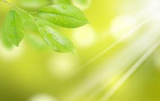
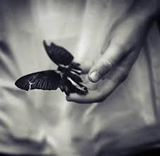
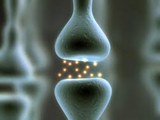 The surface circuitry needs to be mastered
The surface circuitry needs to be mastered
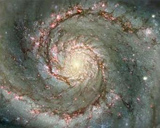 When I am coiled up inside
When I am coiled up inside
 Losing contact with the body produces pain
Losing contact with the body produces pain
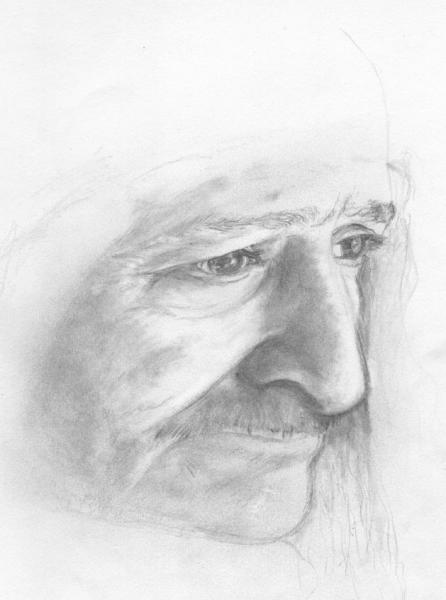 Lesson to learn from pain
Lesson to learn from pain
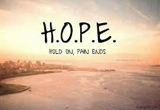 Open doors
Open doors
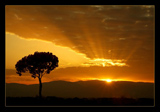 Enter the soul
Enter the soul
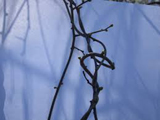 Vital twists
Vital twists